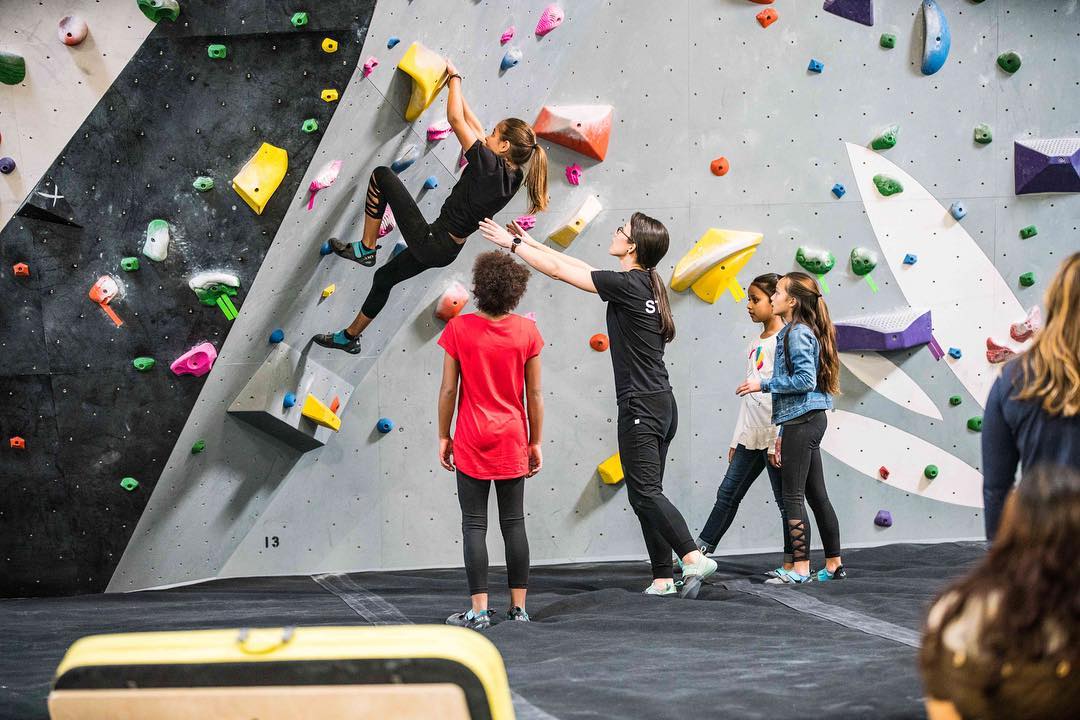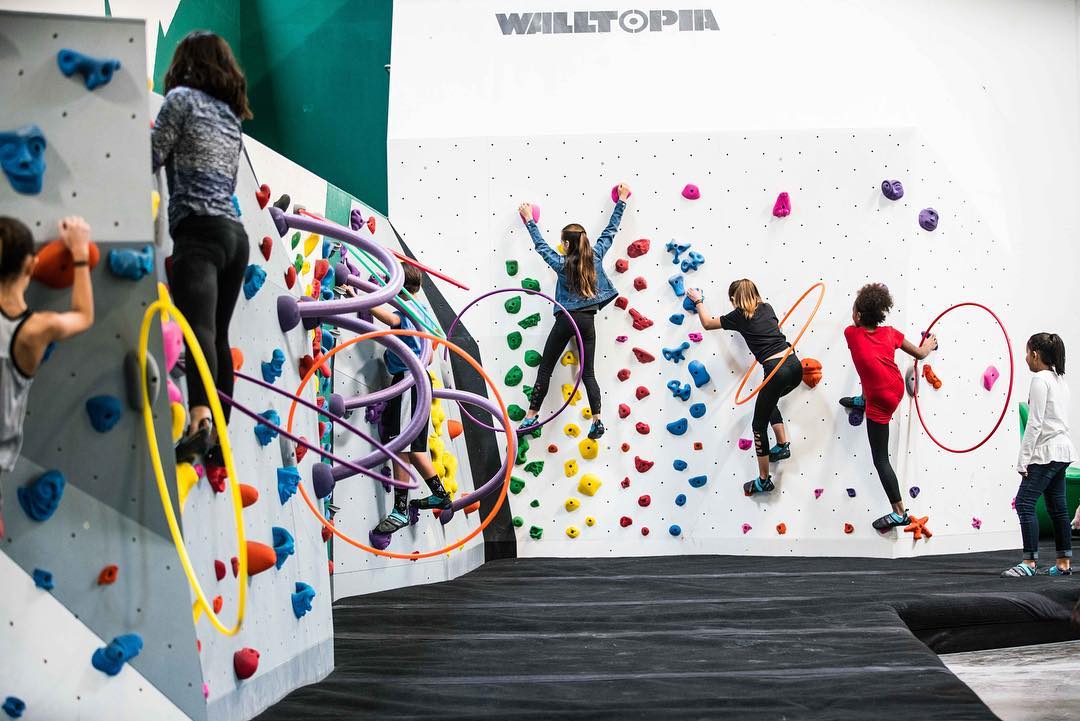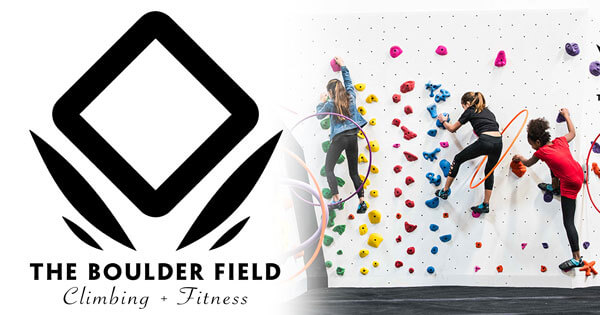


Why do kids love rock climbing? It’s no surprise to parents that kids love to climb. From their first steps, they progress almost overnight to scaling everything they can until they become real climbers. Chill for the first few times, and really quite cute. But very quickly, parents have a new 24/7 job trying to provide some “guardrails” to the activity. Make sure they don’t climb too high and take risks that are too great.
Why do kids love to climb? For kids, it’s simple…it’s fun! And that’s all that matters to them. They aren’t going to intellectualize or analyze it; they are just going to do it and have a ball doing it.
Second, kids love to climb because it’s a way to take risks. Childhood is all about, if nothing else, pushing boundaries and learning to feel danger and the resulting rush of adrenaline. Every climb presents the risk of falling, and possibly hurting or injuring oneself.

Third, kids love rock climbing because they are natural learners and they instinctively know that every climb represents a learning opportunity. They know, at a cellular level, that it’s going to feel really good to be faced with a challenge that involves risk, to figure out a strategy to meet the challenge, and then for climbers to execute the strategy successfully.
Finally, as every parent knows, a child just doesn’t feel good physically, emotionally, or mentally if he or she is stagnant. That child feels good when he or she is active. Climbing is a constant activity…observe the challenge, plan the approach, attempt the approach, fail, rest and reconsider the strategy, try again, succeed, find a new climb, repeat, etc.

Parents are often drawn to climbing as a good activity for their kids based on the characteristics of the community they observe in action when they visit a gym. As someone famous (yes, I know who) once said, it takes a village to raise a child. That village consists of a lot of elements happening outside the home – schools, afterschool activities, camps, and even friendships. These parents see the climbing community as offering a good example for their kids, a solid, supportive part of the village.
So what does that climber’s community look like? Not necessarily what your child will participate in at the outset, and certainly as a young child, but what type of community is being modeled by the older community participants?
Let’s look at Miguel, a composite of the typical climber. He has a college degree and is working 40 hours per week at his first job out of school at a local, well-known tech company. He has no current steady partner (but is absolutely open to the possibility). He lives with two roommates. He visits his local climbing gym most nights after he gets off.
By no means does he consider the gym his exercise place. Rather, he considers it his community meeting place. He will get his workout in over the course of his visit, but the focus is joining his community for a few hours. Yes, a few hours.
First, he usually, heads to the café and orders his favorite espresso drink. He sees a couple of friends and chats with them for 15 or 20 minutes at the café bar. Stephanie recently launched her own marketing company. Justin who just graduated from high school and is trying to figure out the next step. Sarah is in a UC Davis PhD program.
When done, he straps on his climbing shoes and moves down to the warm-up area to warm up the muscles he’ll need to climb. He sees several other people he has seen at the gym before, but never met, and strikes up a conversation with them as he limbers up. After 20 or 30 minutes of this, he moves over to the climbing area and sizes up what has changed in terms of routes since his last visit.

He typically spends the next couple hours moving around the gym, climbing with different people he knows and often people he doesn’t know, which is where the seeds of new friendships are borne. With any particular group, he’ll often be trying to “send” (i.e., complete) a route while others are trying the same or nearby routes. He’ll give it a hard try, fall, and then sit back on the mat and get a couple of minutes of rest while offering support to one of his fellow climbers.
Then he’ll try again. Other climbers will often share “beta” information about how to climb the route he is attempting. Or they’ll talk about work, or where they are going to climb outdoors next, or their passion project. If he sees a nearby climber struggling with a route, he’ll typically offer him or her some form of support – encouragement, ideas.
After an hour or two, and a thousand calories burned, he’ll conclude his climbing session and do a short spell on the treadmill or stationary cycle. Then he’ll head back to the café for a locally brewed kombucha and fun conversation with more friends.
So what did the experience involve? Friends, activity, learning, sustenance, collaboration, support, and physical and mental, and often emotional, stimulation. Community. I don’t know about you, but one thing that is learned in life is that true happiness doesn’t come from money, position, or even achievements.
It comes from being a part of and contributing to a healthy, supportive community. Impacting other people’s lives positively and sharing this human experience with other like-minded people. The climbing community, while not perfect, is as close to what is considered an ideal model.

The Boulder Field in Sacramento was built with an intense focus on meeting the needs of kids and their parents. In other words, they wanted to provide plentiful climbing opportunities for kids, with appropriate “guardrails” to ease the concerns of their parents. Thousands of families in the area think they succeeded. Check them out!
If you’re looking for more sports activities for your kids, check out our sports category.
Interested in more blog posts about children’s health? Check out our health-related blog posts.
Just enter your email address below and you’ll get an email every time we publish a new post!
Categories :
Tags :
We believe in building & supporting the community and that finding the resources and things to do for your kids should be easy. 4kids.com is a FREE online resource guide for families with kids in a city near you.
View All PostsNotifications